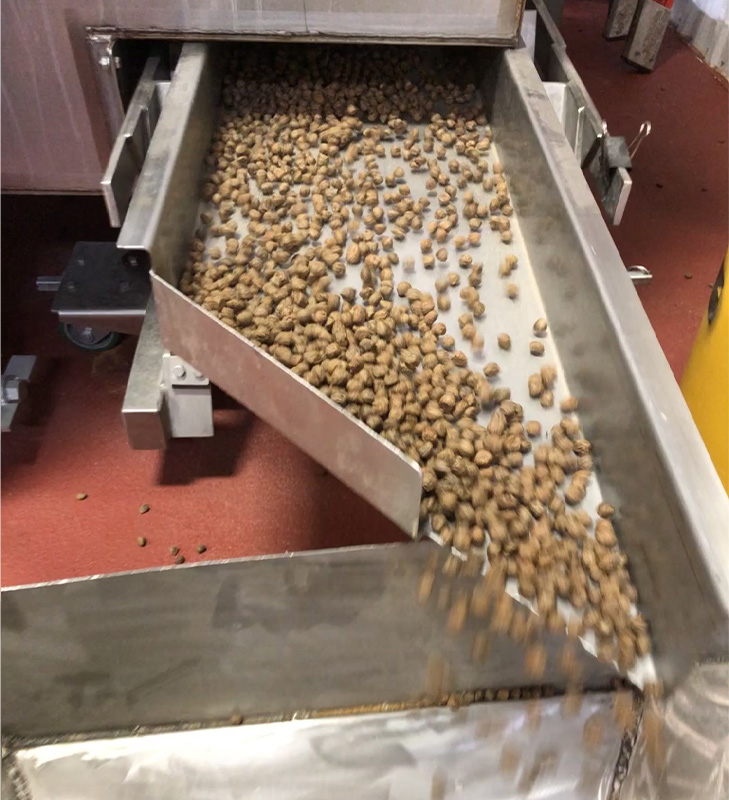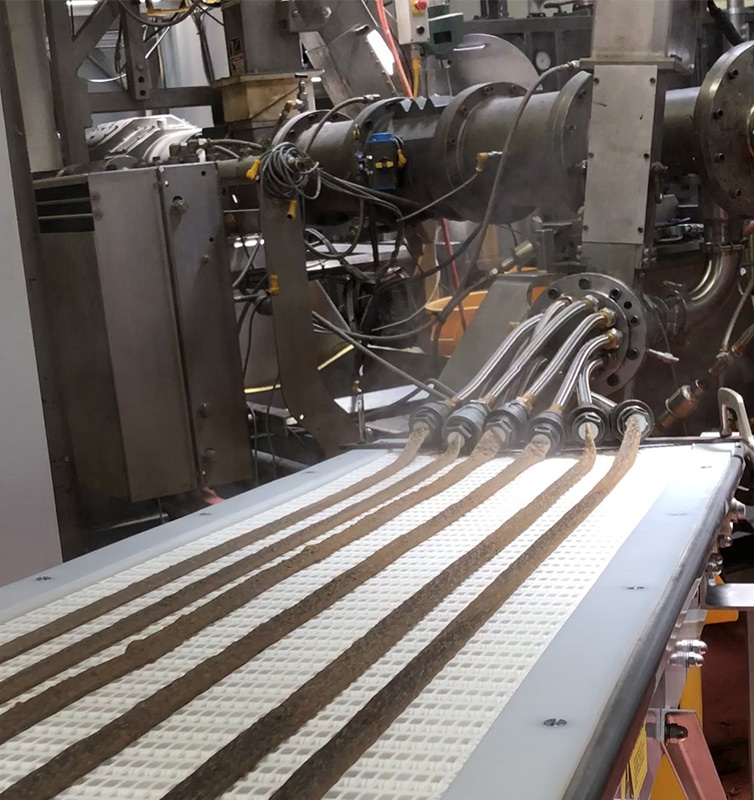SABETHA, Kan. — Today’s growing pet food and treat market demands a greater variety and availability of products with high meat content and a wide selection of healthy ingredients. To move with the industry and participate in its growth, processors may need additional tools to offer a greater range of applications and innovations. Wenger Manufacturing, Inc., Sabetha, Kansas, hosted pet food and treat processors from across the globe and shared insights to improve operations and processing flexibility. The event took place at Wenger’s manufacturing facility and technical center in Sabetha in May.
Wenger highlighted how advancements in extrusion technology and understanding how to apply the available technology to different formulations can improve process flexibility and address the challenges some formulations present. As meat levels increase, a wider range of tools before, during and after extrusion are needed to successfully produce the safe, high-meat products popular with today’s pet food customers.
Wenger presented the various tools and technology available in context to specific processing challenges. Galen Rokey, director of process technology-pet food for Wenger, explained that systems need to be flexible enough to handle expanded ingredient inventory, raw material variation and increased levels of meat and other slurries while controlling safety hazards and production costs to produce a stable product that meets shelf-life requirements.
During the one-day event, the Wenger Technical Center ran approximately 1 ton of product for two processing demonstrations. The first product Wenger ran was a high-meat, grain-free, complete-diet kibble that contained 80% Mechanically Separated Chicken (MSC). The kibble production line included a Wenger Thermal Twin-Screw extruder, a Convection Roaster (CVR), a multi-pass dryer, a Bulk Density System (BDS) and an Automatic Quality Assessment (AQA) system that provides inline product quality verification.
The second product demonstrated was a high-meat, grain-free, jerky treat recipe with 50% MSC. The system included a Thermal Twin-Screw extruder, a cooling conveyor and rotary cutter.
According to Rokey, thermal twin screws offer lower energy and wear costs, produce less sticky products due to low shear, can process recipes with higher meat and other slurry levels, offer more natural cooking from heat rather than friction, preserve more vitamin and mineral properties compared to a standard single screw extruder and improve the appearance of standard pet foods.
Wenger defines “high meat” as recipes containing 40% to 110% or more of meat slurry in relation to the dry ingredients. For example, a recipe that included 1,000 lbs. of dry ingredients and 500 lbs. of wet fresh meat or meat slurry would be considered a 50% meat recipe. A 110% meat recipe would include 1,000 lbs. of dry ingredients and 1,100 lbs. of wet meat ingredients. To accommodate the demand for recipes with high meat inclusion and the processing challenges that presents, Wenger detailed several equipment solutions.
Wenger’s overview of the tools available for extruded pet food and treats became a lesson in Three-Letter Acronyms (TLA). The TLAs covered included High Intensity Preconditioner (HIP) features such as Mixing Intensity Controls (MIC), Steam Mixing Injectors (SMI), Vent Control Systems (VCS) and Continuous Mixing Technology (CMT). Also covered was the role of the Back Pressure Valve (BPV) in food safety.
Additionally, a Phase Transition Analyzer (PTA) helps identify how well product will flow through an extruder, a Rapid Viscosity Analyzer (RVA) provides the history of starch gelatinization or viscosity prior to extrusion, and a CVR is a pre-drying option that sets the product structure, removes some of the moisture and helps control the final hardness.

According to Rokey, a twin-screw extruder is the process of choice when greater ingredient flexibility is required or with recipes that include ultra-high levels of internal fat (above 7%) and meat slurry (above 50%). Also, twin-screw extruders are the preferred choice for ultra-small product sizes (less than 1.5 mm in diameter) or when very uniform product size and shape are desired.
On the right system, processors should be able to produce dry-expanded products, extruded baked pet foods, high meat pet food, kibbles with inclusions, engineered ingredients, soft moist foods, long goods/treats or textured vegetables and meat. Although one thermal twin-screw may be capable of producing this entire range of pet food and treats, maximum product throughput varies with each product type; and the capabilities of the entire processing line including packaging impact Overall Equipment Effectiveness (OEE) — the TLA crucial to ROI.
Read more about pet food extrusion technology in the June digital edition of Pet Food Processing.








